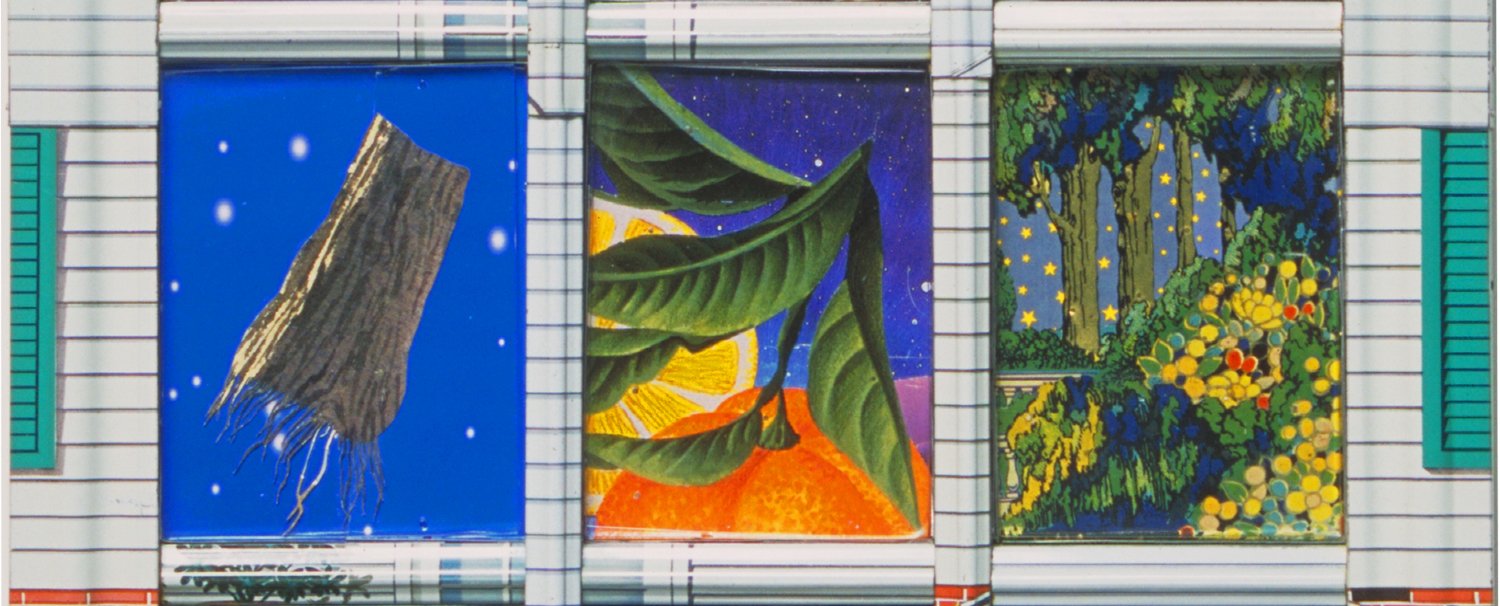This seder plate has a total of twelve windows with symbolic references to the Seder service. Stars are a predominant background since the Seder service takes place at night starting immediately after sundown. Some of these windows will not be used for an item (like the traditional Seder plate) but refer to the Haggadah's narration of the Seder service.
Scroll down for an explanation along with a close-up image for each window in the Seder Plate How Is This Night Different From All Other Nights.
Seder plate window frame is constructed using pre-printed steel dollhouses (white house siding with red brick). Twelve window scenes are constructed using recycled tin containers. Window panes are removable Plexiglas. 10k Gold rivets, sterling silver rivets, and stainless steel screws.
1.75" height x 20.25" length x 12.5" width
This sculpture is available for purchase or exhibition.
Explanation of seder plate sections is below starting L. to R., top to bottom.
The Angel of Death is described in the Haggadah. Traditionally figurative images are not used in Judaica so the angel is abstracted by showing just wings and drapery.
Lambs refer to the Pascal lamb. This is where the shank bone should be placed on the Seder plate.
Grapes refer to the four cups of wine consumed during the Seder service.
Usually, salt water is placed on the seder table for everyone to dip their parsley. Salt water is to remember the sweat and tears of our ancestors. This image of salt water includes the Golden Gate Bridge since I live near San Francisco, CA.
Sun/Man in the Moon The seder service starts after sundown.
Stars will always be in the sky since the Seder service takes place at night.
This is where you place the horseradish root, the bitter herb Maror, a reference to the bitterness of the lives of the Israelites.
The Orange represents feminist or gay/lesbian participation in Judaism. There is an orange on every Seder plate that I have made.
Parsley is placed on the Seder Plate as a symbol of spring.
Charoset is a combination of chopped apples and raisins soaked in wine and resembles mortar used by the Israelites to make bricks for the pyramids.
[If Charoset is to be put on this Seder window, drain a symbolic amount on a paper towel so it won't drip or put it in a little dish.]
A roasted egg is a reminder of the sacrifice which took place in the Temple. Eggs are also a symbol of spring and rebirth of the Jewish people.
The door fits the context of the dollhouse material used to construct the framework for this seder plate because the Seder service usually occurs at home with family and friends. Also, during the seder service a door is always opened for Elijah.
This seder plate is included in the book 500 Judaica: Innovative Contemporary Ritual Art. The affiliate links for this book are provided for your information. Purchasing this book may provide this website with a few cents to cover expenses.
My seder plate was used on the cover of The Source, A Supplement for New Jersey Jewish News
© Harriete Estel Berman, 2000-2001, 2021, 2023







